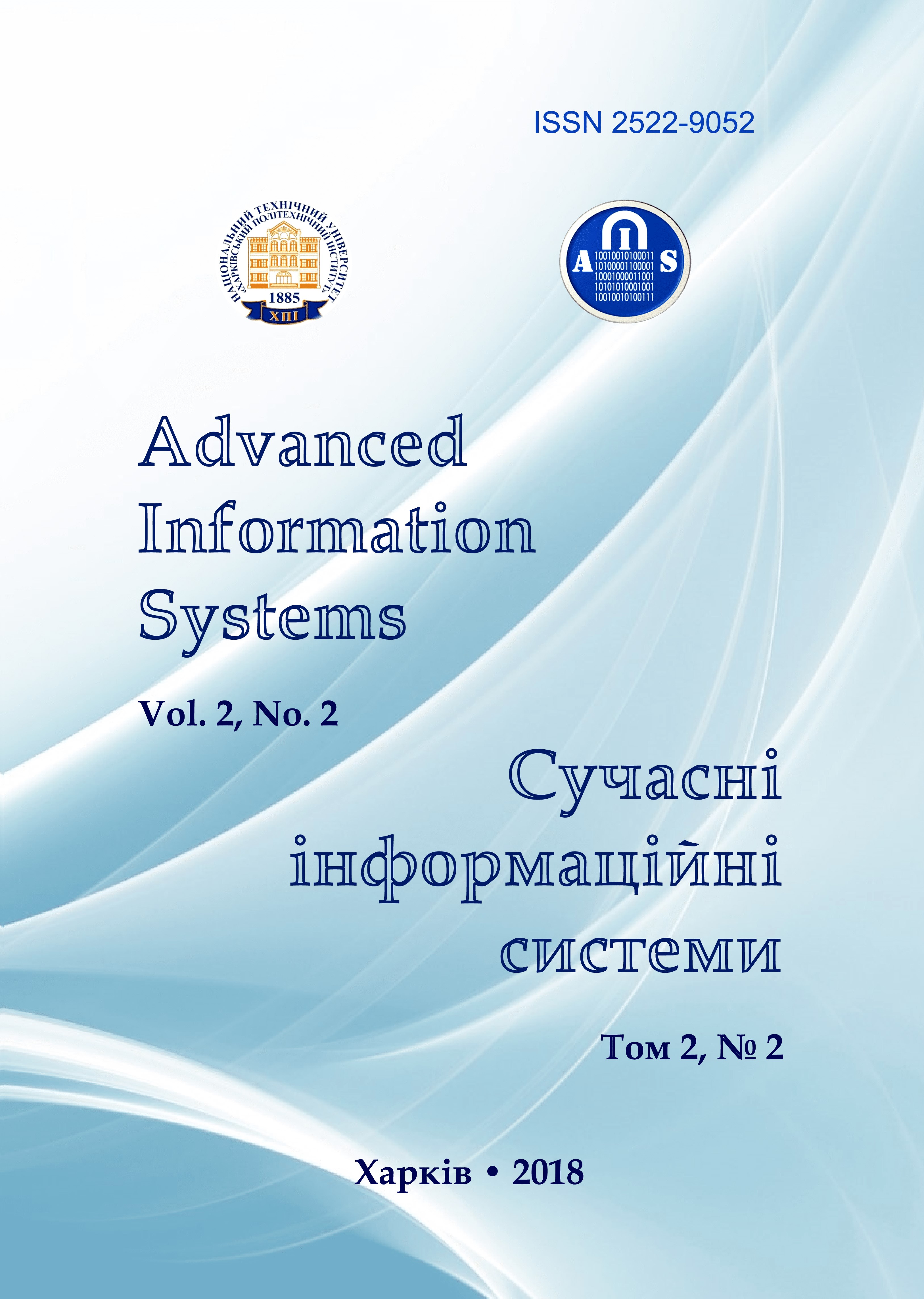METHOD OF CODING INFORMATION DISTRIBUTED BY WIRELESS COMMUNICATION LINES UNDER CONDITIONS OF INTERFERENCE
Main Article Content
Abstract
The subject matter of the paper is the processes of analysis and evaluation of the effectiveness of information coding methods in wireless systems. The aim is to improve noise immunity of information messages under conditions of powerful electromagnetic interference, with the help of complex signal-code constructions. The objective is to develop a method for noise-immune encoding in a wireless information transmission system, providing increase in information transmission rate. The methods used: Simulation and digital signal coding. The following results have been obtained: A method for encoding information transmitted via wireless communication lines in presence of interference. For signal coding, it is proposed to use Gaussian monocycle with time-dependent position-pulse modulation (PPM). It is shown that for organization of independent channels within a single frequency band, it is practical to use a system of orthogonal codes. Pulses of the useful information signal accumulated in a receiver correlator provide significantly increase in signal-to-noise ratio, allowing transmission of information over a wide frequency range well below the noise level. As a result of encoding information in wireless information transmission systems with the help of ultra-short pulse signals, the effectiveness of the proposed method is a quantitatively and qualitatively evaluated. Conclusion. Using Pulse Position Modulation coding in wireless information transmission systems allows transmitting large volumes of information with high transmission rate and high noise immunity of the communication channel as well as protecting the channel from message interception. Ability to work with low radiating power and high signal capacity to penetrate various obstacles ensure fulfilment of electromagnetic compatibility requirements as well as stable communication in conditions of multipath radio wave propagation. A possibility that powerful electromagnetic disturbances accompanying a lightning discharge may have catastrophic impact on the information transmission channel is also eliminated.
Article Details
References
Kharchenko, V.S., Sklyar, V.V. and Tarasyuk, O.M. (2003), “Analysis of the risks of accidents for rocket and space technology: the evolution of causes and trends”, Radiotechnical and computer systems, NAU "KhAI", Kharkiv, Vol. 3, pp. 135-149.
Kuchuk, G., Kharchenko, V., Kovalenko, A. and Ruchkov, E. (2016), “Approaches to selection of combinatorial algorithm for optimization in network traffic control of safety-critical systems”, East-West Design & Test Symposium (EWDTS), pp. 1-6, available at : https://doi.org/10.1109/EWDTS.2016.7807655.
Kuchuk, G., Kovalenko, A., Kharchenko, V. and Shamraev, A. (2017), “Resource-oriented approaches to implementation of traffic control technologies in safety-critical I&C systems”, Green IT Engineering: Components Network and Systems Implementation, Springer International Publishing, Vol. 105, pp. 313-338.
International Standard IEC 62305-1 Edition 2.0 2010-12 (2010), Annex A. Parameters of lightning current. Annex B. Time functions of the lightning current for analysis purposes.
IEC 1000-4-92 I(1992), Immunity tests. Resistant to interference. Level of noise immunity.
Serkov, A.A., Kravets, V.A., Breslavets, V.S. and Tolkachev M.Yu. (2018), Research report under the contract No. 65708 of December 22, 2017, “Computer modeling of the process of stress and current generation in cable communication lines as a result of electromagnetic field, accompanying lightning discharge”, 57 p.
Serkov, A., Breslavets, V., Tolkachov, M., Churyumov, G. and Issam, Saad (2017), “Noise-like signals in wireless information transmission systems”, Advanced Information Systems, Vol. 1, No. 2, pp. 33-38, available at:
